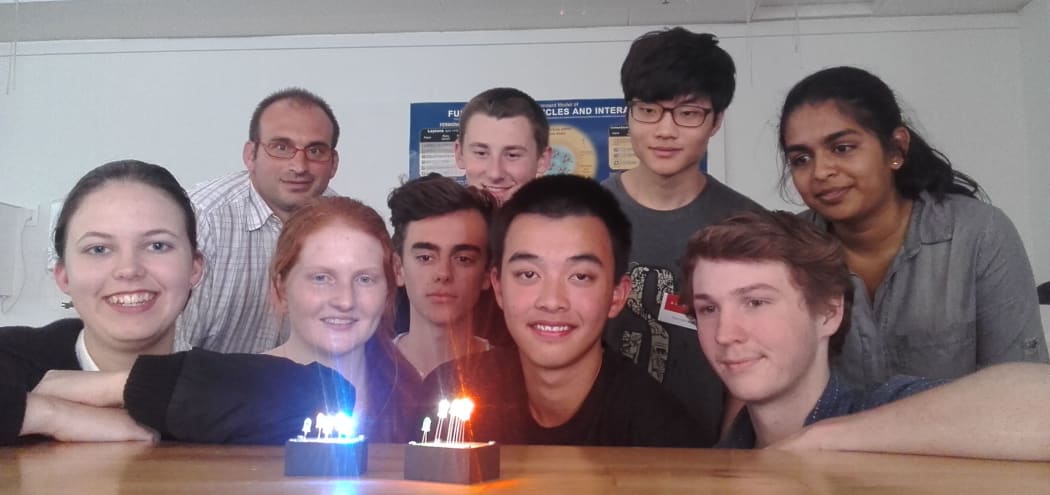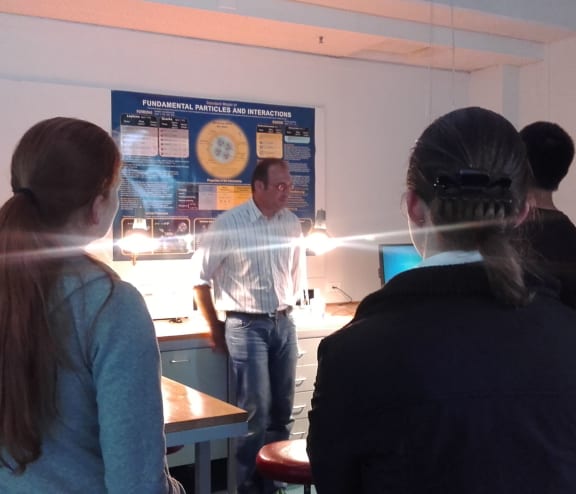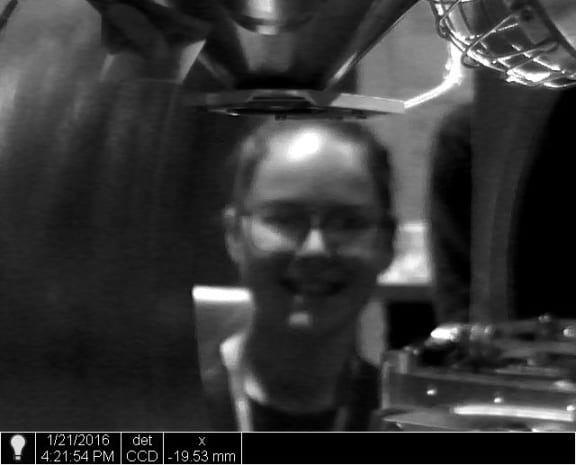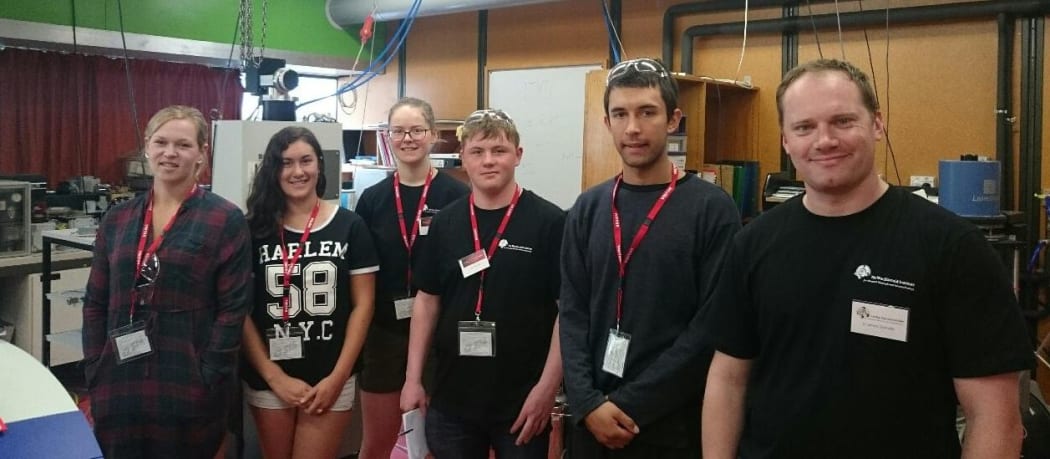
The 2016 nanocampers experimented with light-emitting diodes, or LEDs, to learn about the chemistry and nanotechnology involved in producing different colours of light. Photo: Veronika Meduna / RNZ
High-precision lasers, superconductors, nano-scale electronics and glow sticks were all on the curriculum for a group of Year 12 and 13 students as they joined scientists at the MacDiarmid Institute for Advanced Materials and Nanotechnology for a week-long nanocamp.
The students were selected from schools throughout the country and spent a week working with the institute’s top scientists, completing hands-on investigations into a range of topics in nanotechnology.

Learning about LEDs: Victoria University lecturer Franck Natali discusses the differences between conventional light bulbs and LEDs with a group of nanocampers. Photo: Veronika Meduna / RNZ
For Isaac Alexander, from Auckland's Long Bay College, floating magnets were a highlight. "I've never seen something levitate like that and to be able to spin it around and see something spinning without friction was quite fascinating."
Victoria University lecturer Franck Natali, one of the coordinators of nanocamp, discussed light-emitting diodes, or LEDs, with the students to highlight the close links between research and daily life.
"If you cross the street you'll see a traffic light and most of them are now using LEDs. Obviously one of the main applications now is to use LEDs for lighting, for energy savings, and they are are becoming more and more abundant and used more in the community."
He says LEDs are also a good example to illustrate the time it can take from a good idea to research and ultimately to a commercially available product.
"If you take the white-light-emitting diodes, the research started in the beginning of the 1970s, and they are just now readily commercially available. So it took 40 years."

One of the nanocamp students, Cherie Vasta, pictured while the team was creating a thin film. Photo: MacDiarmid Institute
Nicola Gaston, the MacDiarmid Institute's deputy director, says nanocamp is about giving school students a chance to find out out what research in nanotechnology is all about.
"They get to spend time with all of our researchers to find out what happens behind the scenes, what our scientists look like, who they are as people and what they get excited about."
She says the nanocampers get to experience the full spectrum of the institute's research, from chemistry, where they synthesise the luminescent chemicals used in glow sticks to superconductivity and material science, where they manufacture thin films. Some eventually return as researchers.
Apart from nanocamp, the MacDiarmid Institute also runs an annual Discovery Awards programme, Te Tohu Huraina, designed for year 12 or 13 Māori and Pasifika students with an interest in science. They also work with scientists and their post graduate students in research laboratories.

The 2016 Discovery Awards recipients (from left to right): Tia Kendal Lindbom from Nayland College in Nelson, Shania Dudson, Geraldine High School, Cherie Vasta from St. Oran's College in Lower Hutt, Alexander Marshall from Verdon College in Invercargill, Eden Skipper from Lincoln High School, pictured with MacDiarmid Institute investigator Simon Granville. Photo: MacDiarmid Institute
Last year's recipients used a high-speed camera to produce the following video.

